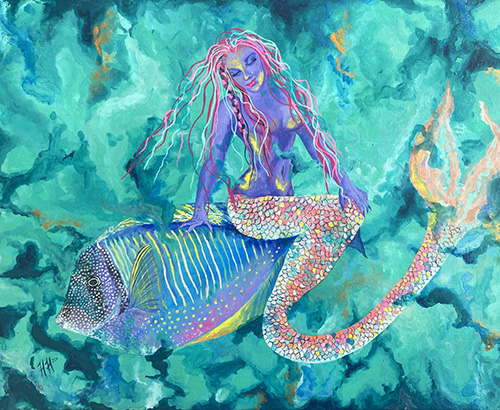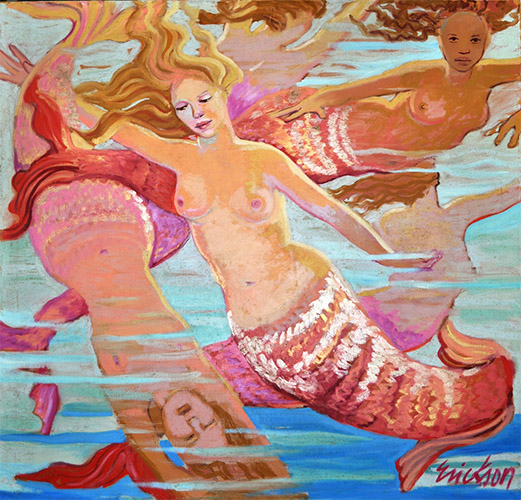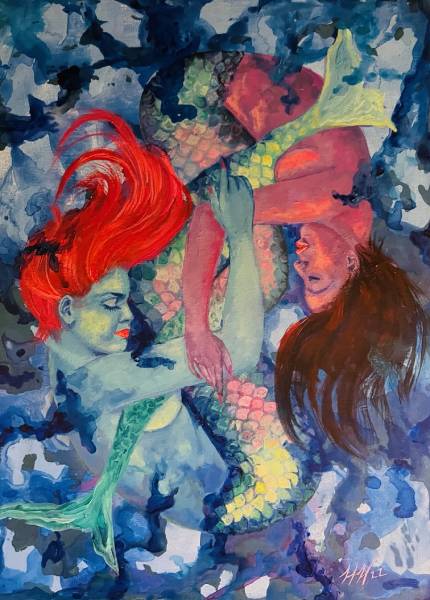Mermaid mythology dates back as far as written history does, and can be found in accounts from around the world, from Ancient Greece and Rome, to Africa, Western and Eastern Europe, and Asia. These tales originate from sailors who believed to have encountered sea-dwelling creatures in the oceans on their journeys. They describe the creatures as having a human torso and a fish tail below the waist. The name originates from Old English mere, meaning ocean. More often than not, the creatures were female, thus the name mermaid, although tales of mermen were not unusual.

The symbolism of mermaids is as fluid as the ocean itself. Depending on the culture of origin, sightings of a mermaid on a sea voyage could be both a good or bad omen. There are legends that claim that mermaids were capable of controlling the weather, summoning windy gusts to help sailors along on their journey, or to create devastating storms that would cause shipwrecks along the bottom of the ocean.

Some cultures believe that mermaids are a sign of good luck, and signify fertility and life in the ocean. Others harbor darker beliefs, where mermaids are a sign of misfortune who are described as beautiful creatures who lure sailors away from their path to their watery deaths.

Many stories have been told about mermaids throughout the centuries, but one of the most famous is by Danish fairy tale author Hans Christian Anderson, who wrote The Little Mermaid. A sculpture of the Little Mermaid was created by Danish artist Edvard Copenhagen for the harbor in Copenhagen in 1913. A few years later, a half-size version of the Little Mermaid sculpture was created for St. Thomas, which had been a Danish colony until 1917. She sits and greets cruise ship passengers in the Crown Bay Marina, just steps from the cruise ship docks and shopping center.



0 comments on “Mermaid Mythology”